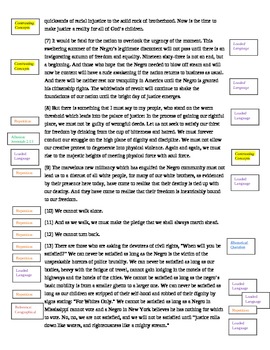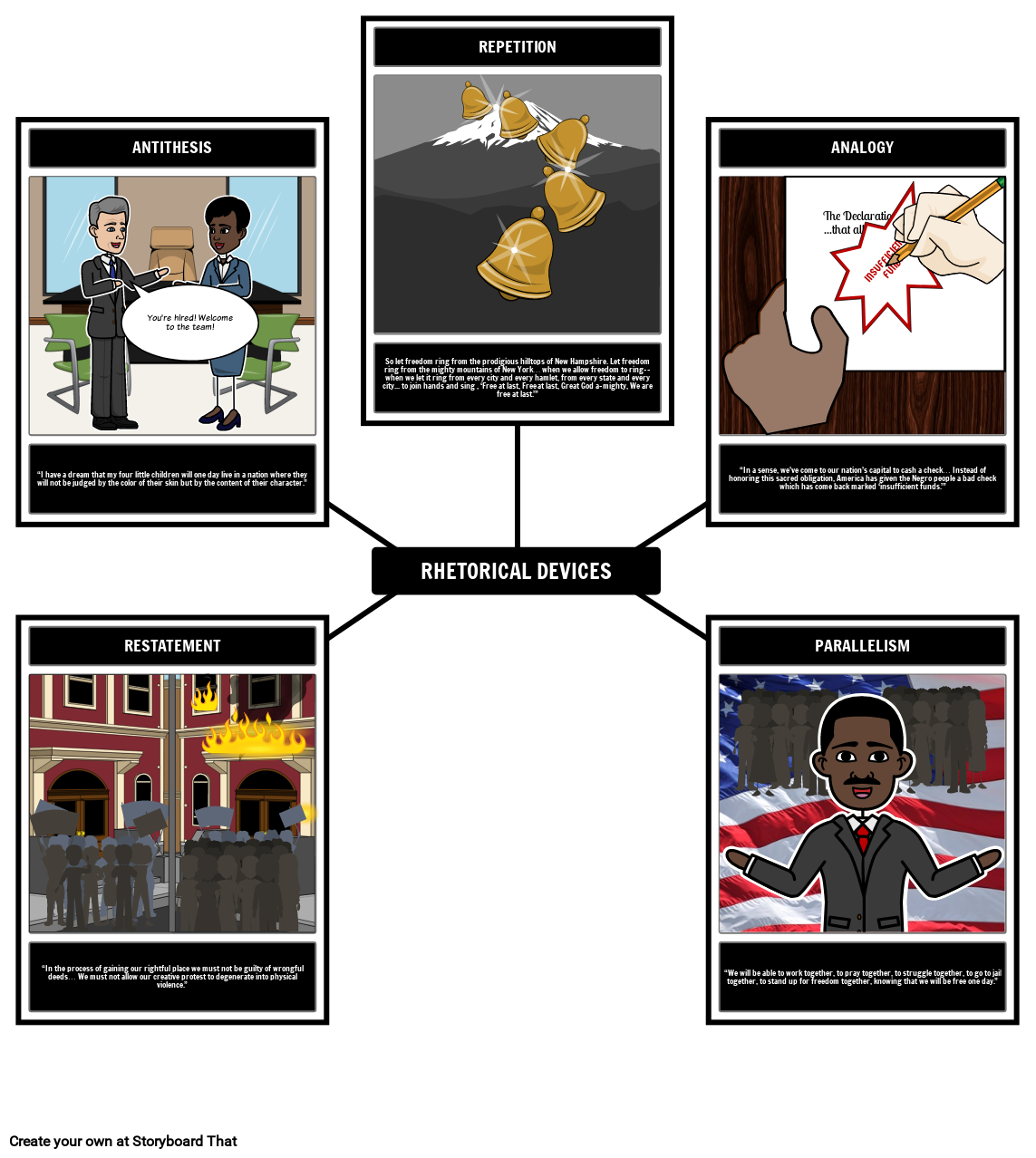

The author juggles between formal and informal style in his style delivery. There are some foundation points that the author highlights in his speech that brings out the clarity and the mental imagery of the speech. King adopts a high position on the issue of the whites mistreating the blacks. The rhetor expresses his personal beliefs.

In some instances, the scope of the speech changes to argumentative. “I have a Dream” takes a narrative approach. It emphasizes the shifts in the mood of the rhetor, make the speech more personalized, and helps to make transitions from appealing to ethos and pathos. The type of the narration is among the most important rhetorical components of the speech. Perhaps, it was an attempt to attract the attention of legislators, policymakers and other government officials who lived and worked in the capital city. However it is worthwhile to note that King delivered the speech in Washington DC. The whites were to hear the black people’s plea of the frustration they were facing so as to desist from treating them as third rate non-citizens. The blacks were to hear their struggle for equality and to have the courage to ask for their rights as the constitution entitles them.

It focuses both on the blacks and the whites alike. The audience of the speech is a general one. “I have a Dream” is the thought-out rhetorical speech, that is a good example of appealing to logos, ethos and pathos of the wide audience. He also wanted to pass a message of challenge both to black and white Americans, to persuade them to have a valid discussion to end such racism that, according to him, was unproductive and backtracking. He urged them to wake up to the reality of the disappointments and the frustrations the black people were going through due to the rampant racism. The year was 1963 and the principal aim of his speech was to inspire the citizens of the United States. In a period when civil rights of the black people in the United States were trampled on by the majority whites, Martin Luther King, a minister of a Protestant religious community and a leader of the Civil Rights movement delivered a landmark speech in Washington. Rhetoric Analysis of “I Have a Dream” by Martin Luther King


 0 kommentar(er)
0 kommentar(er)
